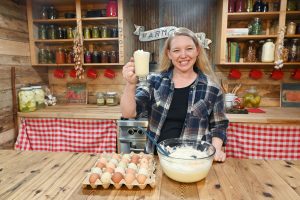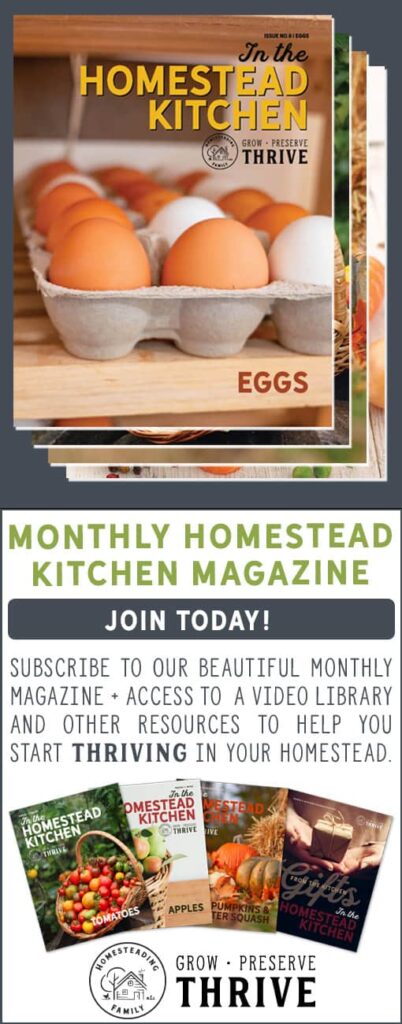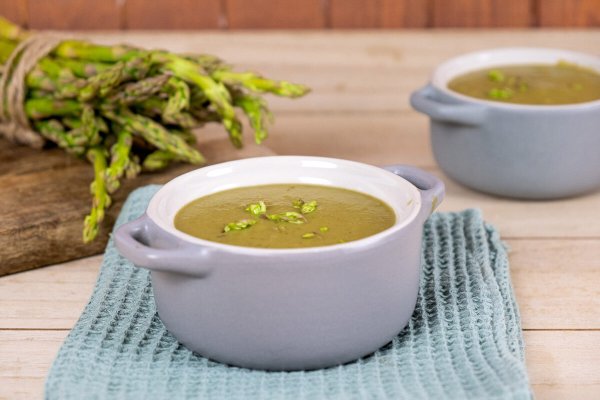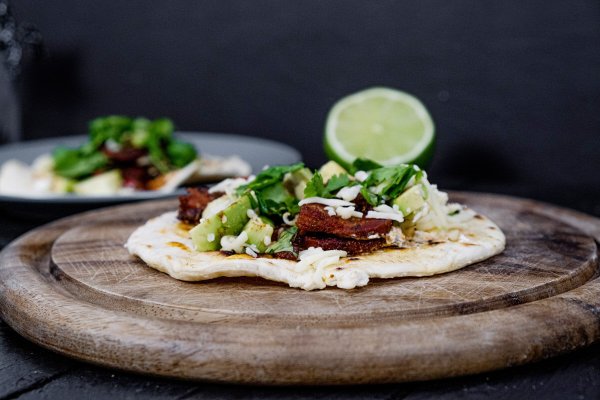Most of us start preserving food with entry-level recipes such as refrigerator pickles, freezer jams, or simple canned jams. But if you’re looking to up your game, this Canning 101 post is for you. You’ll learn the basic methods to preserve shelf-stable foods stored in your kitchen or pantry. Read this guide to canning to become more confident and successful with your homesteading journey!
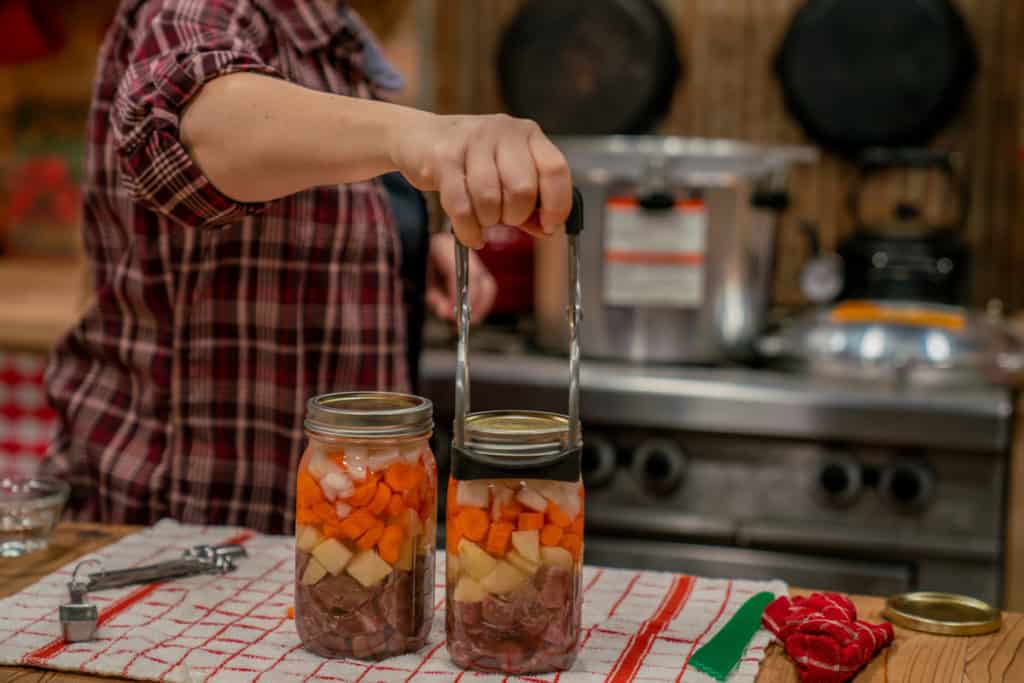
Table of Contents
ToggleWhy I Love Canning
I love preserving the food we raise and grow! We use fermentation, freeze-drying, dehydrating, root cellaring, and, of course, canning! Canning offers a wonderful way to stock your pantry or to give delicious and heartfelt homemade gifts.
When you start canning, it’s easy to be tempted to recreate the grocery store in your pantry. Sure, it’s a nice idea, but canning takes time and work, especially when you do it on a large scale.
I have learned to carefully and thoughtfully plan which foods I’m going to can. I love canning what I call convenience foods that make it possible to get three homemade meals on the table daily. My pantry shelves are lined with staple ingredients such as canned (raw pack) beef, canned ground beef, canned (raw pack) chicken, vegetables, black beans, jams, specialty fruits, and homemade bone broths.
We find it important that when you’re spending all this energy and time canning something, it will be part of a meal later on. If we can specialty foods that we don’t typically eat, we find it to be more or less a waste of time.
I also can ready-to-eat meals that we can just heat and eat, like this beef stew recipe or easy white bean chicken chili.
We find this approach to canning adds to our lives by saving money on groceries and time in the long run. It’s worth taking the time to run the pressure canner to preserve the foods we worked so hard to raise and grow.
Listen and Subscribe: Apple Podcasts | Spotify | iHeart | Google Podcasts
What Is Canning
In straightforward terms, canning means putting food inside a jar, closing the lid on that jar, and processing that jar of food with heat to sterilize or pasteurize everything. The lid is vacuum-sealed during that process, and the food becomes shelf-stable.
When complete, you have a pasteurized, vacuum-sealed product that can sit in the pantry for a year or two (or longer), depending on what it is.
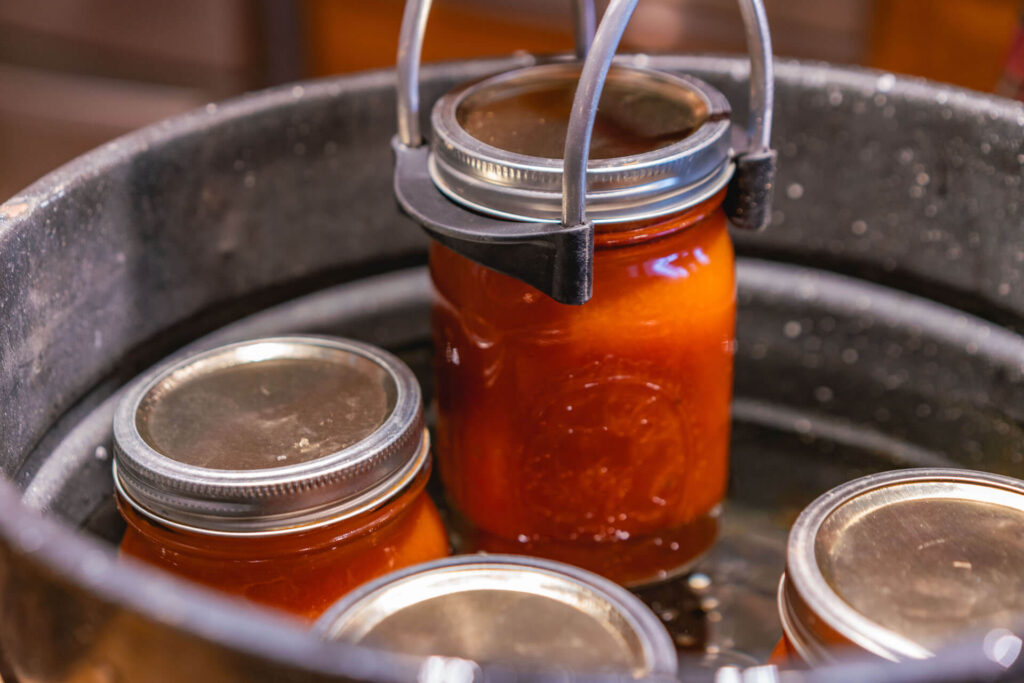
History of Canning
The history of canning starts with Napoleon, surprisingly! The methods of food preservation back then didn’t travel well. You couldn’t just take your ferments or root cellared food when exploring or marching to overtake a country.
Napoleon realized that this was a massive weakness in his battle strategy. So, in 1795, he advertised a contest to develop food preservation that would allow him to move food with his troops or to his troops during battle.
It took 15 years, but in the early 1800s, a Frenchman (Nicolas François Appert) developed an early version of what we know as modern canning today. Back then, standardized glass production, among other things, didn’t exist, making it next to impossible to can food at home.
It wasn’t until the 1850s when Mr. John Mason came up with the standardized glass jar with the screw-top lids, The Mason Jar! Once the Mason jar became available to regular people, home canning quickly became a widespread method for food preservation.
Then, canning improved again in 1950 when Alexander Kerr developed the two-part lid, making canning a little safer and setting the standard for canning that we still use today.
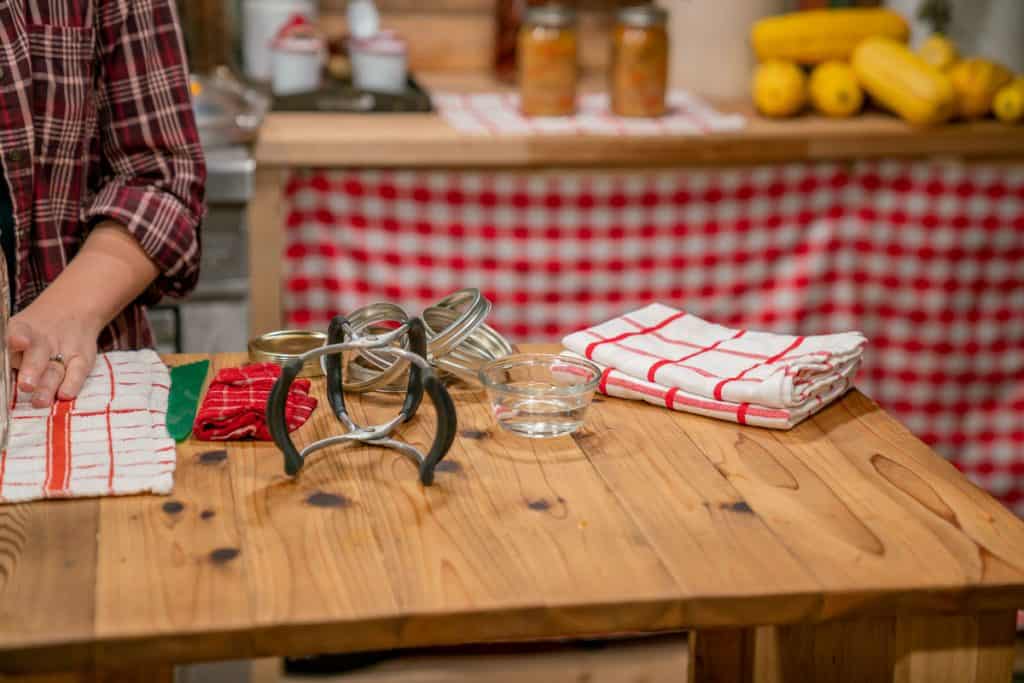
Equipment Needed for Canning
- Heavy-Bottomed Stock Pot with Lid and Jar Rack – Use a large pot for water bath canning. Place a jar rack, canning jar rings, or a folded-up kitchen towel in the bottom of the pot for the canning jars to sit on. Or, use an official water bath canner. Homesteading Hack: You want your canning jars up off the bottom of the pot to avoid rattling and possible jar breakage.
- Glass Canning Jars with Lids and Rings – Choose the size and shape of your jars based on what you preserve and your personal preference. Homesteading Hack: Check for cracks or nicks when you clean and dry your jars. You may ask, can you reuse canning lids? Use new lids with a solid rubber seal whenever possible to ensure a stable shelf life for your preserved foods.
- Pressure Canner – I highly recommend the All-American Pressure Canners for their durability, high quality, and safety features. They come with metal-to-metal seals, so you never have to replace a rubber gasket (like some other pressure canners). The All-Americans also use a weighted gauge, which means you don’t have to get your dial gauge tested yearly.
- Labels and Markers – When preserving food, take the time to clearly label your jars with the name of the food and the date. It can get confusing to identify batches when all the jars are on the shelf. Be sure to date your food so you can easily keep track of how long canned food is good for.
- Jar Lifter – Jar lifters help to remove the jars from the boiling water safely and efficiently.
- Magnetic Lid Lifter – This handy tool lets you pick up sterilized lids from hot water and place them on the jar without touching the lid with your hand.
- Funnel – Jar funnels help reduce spills and messes when filling jars. I prefer using a stainless steel funnel.
- Colander – For some recipes, a colander is handy for straining off liquids or simply washing fruit.
- Headspace Ruler/Bubble Popper – Use a headspace ruler/bubble popper to remove air bubbles and ensure no air pockets remain in your jars. This tool also measures proper headspace for your recipe.
- Kitchen Tools – Sharp knives, large spoons or ladles, or other utensils help the canning process go smoothly. Homesteading Hack: Stainless steel utensils are the easiest to sterilize.
- Dish Rag – Have a dish rag and soapy water ready to clean up any spills throughout the canning process.
- Vinegar – If canning fatty foods, it’s good to have some vinegar to dip your rag into for cleaning the jar rim prior to adding your canning lid.

Canning Safety
So many of us cook, garden, or preserve food based on intuition or the way we think our grandma did things. However, with canning we truly need to follow the rules.
We know much more today about how to can safely compared to what our grandmothers and great-grandmothers knew. Don’t rely on common sense or intuition; learn the science of canning and follow all the safety rules and suggestions.
- Industrial Model vs. Natural – Unlike many other types of food preservation, canning is not natural. It’s a scientific, industrial model of food preservation that we adopt into the home, which means that canning never occurs in nature like dehydration. If fruit stays on the tree in the right conditions, it naturally dehydrates. Fermenting can also happen naturally. With an industrial model, like canning, you work with different safety rules. Following the safety rules of canning becomes more critical than other natural preservation forms. More and more wisdom and safety tips continue to surface on this relatively new form of preservation than the ancient preservation methods. With advances in microbiology, canning continues to morph and change.
- Botulism – Beginners often say, “I’m afraid I’m going to kill somebody or make somebody sick.” Canning safety is very, very important, but it’s also incredibly rare to make somebody sick or kill somebody when following approved canning recipes. In the United States, an average of 20 cases of food-borne botulism happen per year. Less than three people die each year from all types of foodborne botulism. Furthermore, only a tiny percentage of people sickened by food-borne botulism came from home-canned food. (Source)
- Blowing up the Pressure Canner – The other concern we hear from beginners sounds something like this, “I’m afraid I’m going to blow something up.” The good news is modern pressure canners have so many built-in safety features that it’s nearly impossible to blow them up. You can mess it up, but usually, you have to take a hammer to it to do so. The stories of pressure canners blowing up come from grandmother and great-grandmother or somebody using great-grandmother’s pressure canner. Do you know what happens when the pressure canners overpressure now? You wish it would be dramatic almost because you feel like it should be, but the little weight just kind of goes “bloop” and releases a lot of steam. That’s it!
- Use the Correct Canning Method – The number one rule when canning lies in using the right types of canning method for the right type of food. Learn to decide whether to use a water bath or pressure canning with the food you want to preserve.
- Understand Your Tools – If you use a dial gauge pressure canner, please get it tested before you can with it. I’ve seen them read incorrectly right out of the box. You must get them tested every year to make sure that the dial is correct. Homesteading Hack: If you use a pressure canner with a weighted gauge, you never have to get it tested, this is why we use them.
- Foods Safe to Can – Not all foods can be canned safely. Follow this guide to learn what foods should not be canned.
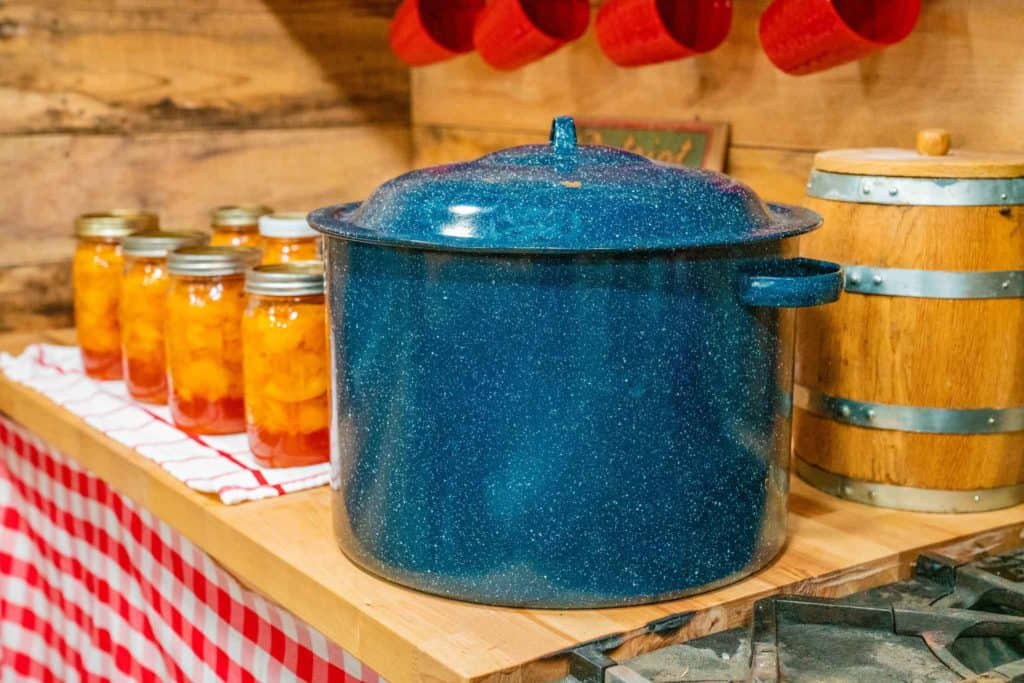
Water Bath Canning
This is arguably the easiest and safest type of canning method. Water bath canning uses very little equipment. You only need a large stock pot with a lid. You can easily learn how to water bath can with just a few simple tips and tricks.
Water bath canning only works for high-acid foods like fruits, pickles, tomatoes (with a little acid added), jams and jellies.
The basic method involves putting your jam or pickles in a sterilized canning jar. Put the jars into the pot, and cover them with at least one to two inches of water. Bring them to a boil, up to 212°F (100°C) and keep the jars at the boil for a specified amount of time, depending on your recipe.
You can pickle all sorts of vegetables with the water bath method, but you need to use an approved recipe. Make sure that the acid you use (like vinegar, citric acid, or lemon juice) reduces the pH to a safe level for whatever food you pickle.
Always be sure to use a safety-approved recipe or a recipe from somebody following the latest safety recommendations.
Before you begin water bath canning, learn about common canning mistakes to avoid when water bath & pressure canning.
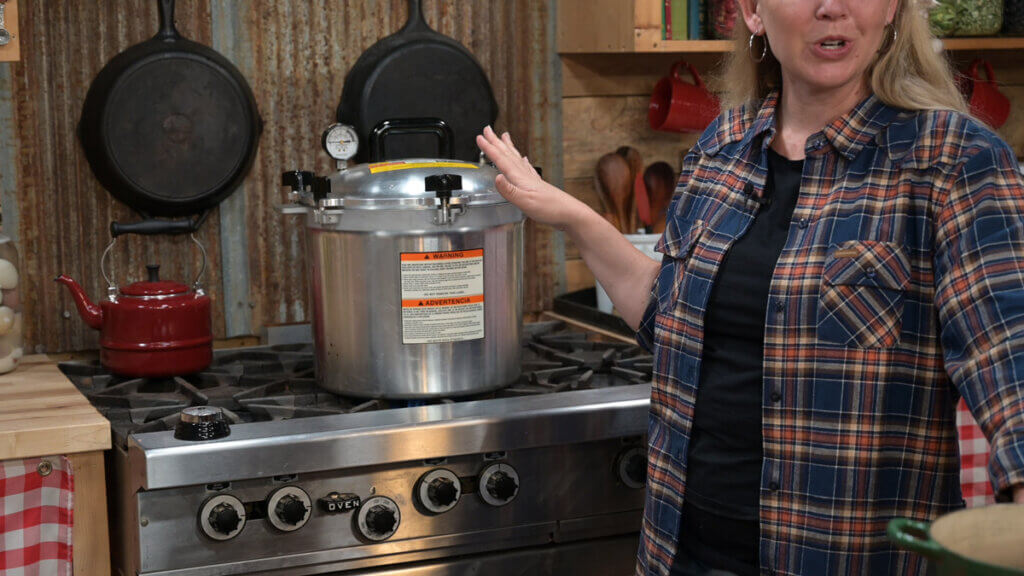
Pressure Canning
While water bath canning can kill off yeasts and mold at boiling temperatures, it doesn’t kill bacteria. Since bacteria can’t live in high acid environments, high acid foods are fine to water bath can. We only need to kill off the mold and the yeast since bacteria won’t survive in high-acid environments.
When you want to preserve lower-acid food, like vegetables, meats, and most sauces or soups, you must use the pressure canning method. Bacteria can grow in a low-acid environment, so it must reach high enough temperatures to kill it.
Most bacteria (like the botulism spores) do not die off at boiling water temperatures. Adding pressure is the only way to kill bacteria in a home environment. This is where a pressure canner comes in because it brings the temperature up to 240°F to 250°F (116°C) and holds it for a specified amount of time.
Many people ask, can I pressure can in an Instant Pot? We do not recommend it since you cannot be fully confident of the amount of pressure inside the electric pressure cooker. Homesteading Hack: There is a difference between an electric pressure cooker and an electric pressure canner.
Electric pressure cookers (like the Instant Pot) do not have a gauge to display the pressure inside. Even electric pressure cookers with a dial still need to be tested for accuracy.
It’s vital to know that you’re canning at the correct pressure for whatever food you are canning to kill off bacteria safely. So, take the Instant Pot off your list of canning options. It’s an excellent tool for pressure-cooking fresh foods, but not for canning.
Before you begin pressure canning, review common pressure canning mistakes to avoid.
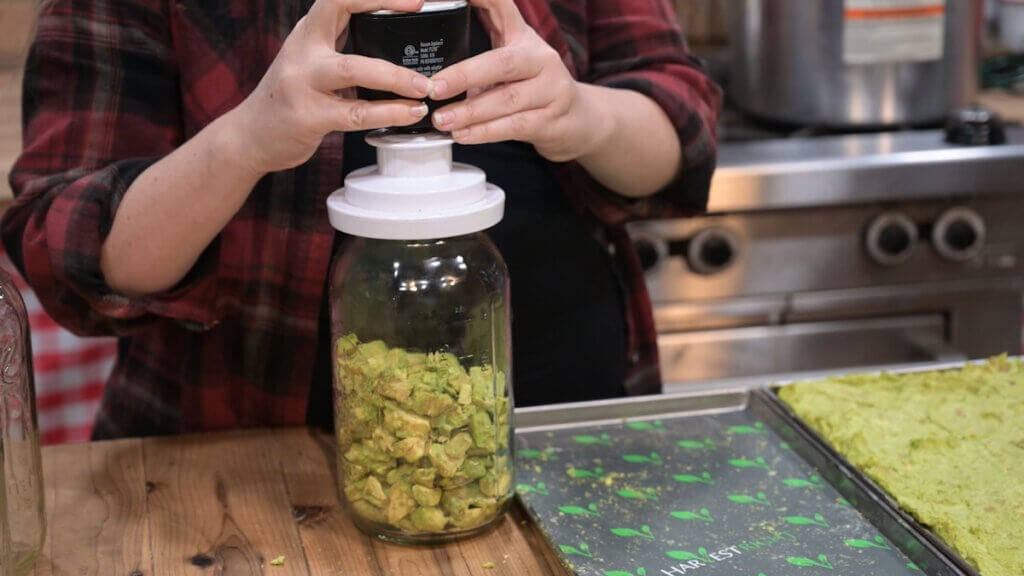
Oven Canning
First, take notice of the two different types of oven canning. People can get into trouble if they don’t realize they may not be talking about the same thing as somebody else. Here are the two types of oven canning:
- Oven Vacuum Sealing – One type of oven canning takes dry, shelf-stable foods, like flour, dried beans, or something that remains shelf-stable (as is) in its packaging. You put it into jars and into the oven. After that, you tap it down, creating a vacuum seal. I don’t use this method since jars tend to break in dry heat, especially if the jar has any nicks or cracks. I use a jar vacuum sealer, which works well and offers a safer solution.
- Oven Canning – Oven canning is highly, highly dangerous. If you’ve never heard of oven canning, it follows this basic procedure: Put your food (like beef broth) into jars, slide them onto a tray in the oven and turn the oven to 240°F. Leave the jars in the oven for a specified amount of time, remove them, and then tap them down to get a seal. This is not safe because dry heat and wet heat work much differently. Dry heat must come to a much higher temperature to kill yeast, mold, and bacteria than wet heat. The temperature required to make the food shelf stable would most likely break your jars. Do not attempt this!
Using canning methods that do not involve a pot of water can cause illness. Even if people swear by it, you do not want to be the one person who gets sick from these unsafe methods. Don’t use your oven, dishwasher, or any other alternative canning methods, ever!
When canning food at home, we recommend only following approved canning methods and safety rules. Always use canning recipes that you trust, and enjoy the journey of lining your pantry with delicious home-canned food that you put there yourself.

The Abundant Pantry
If you want to take your canning to the next level and fearlessly build up your pantry with healthy, home-cooked meals and ingredients, join me in The Abundant Pantry Canning Class.
This class is packed full of information like 50+ video lessons, including over 20 step-by-step recipe tutorials, recipe downloads, a canning workbook, a troubleshooting guide, and much more!
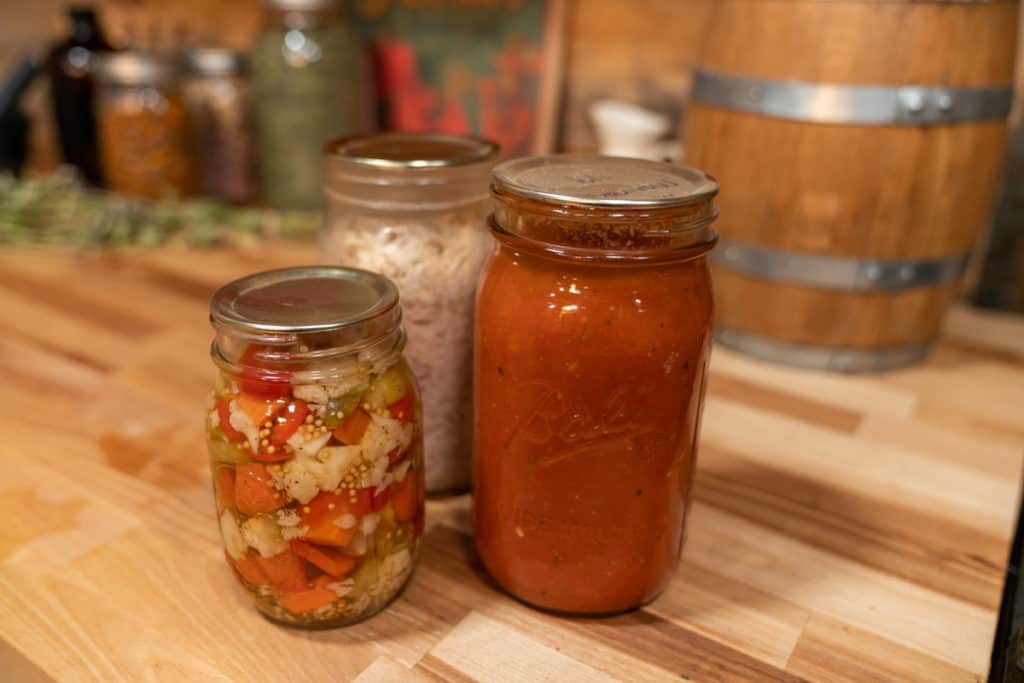
Other Articles You May Enjoy
- Preservation Tools on a Budget
- How to Water Bath Can
- Pressure Canning Mistakes – Avoid These 5 Common Mistakes
- Canning Mistakes to Avoid When Water Bath & Pressure Canning
- Can I Pressure Can in the Instant Pot?
- What Foods Should Not Be Canned
- Where To Find Canning Supplies When There’s a Shortage
- How to Can Pickles
- How to SAFELY Can Raw Chicken
- Canned Ground Beef (Easy Step-by-Step Tutorial)
- Step By Step Tutorial For Canning Meat (Raw Pack Method)



